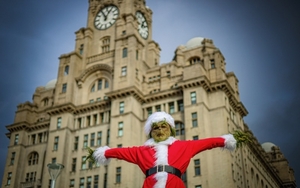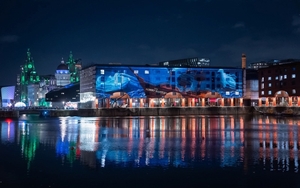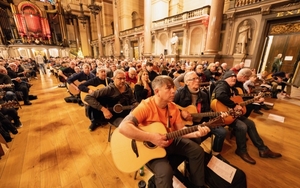AN historic Liverpool church threatened with demolition has been listed at Grade II following an application by SAVE, the heritage charity that fought a lengthy legal battle to save the Futurist in Lime Street from demolition.
The Futurist, opened in 1912, disappeared over the past few days from the familiar Lime Street streetscape after a controversial and long running saga.
Now the London-based campaigners have at least something to celebrate in a costly week.
The Church of the Protestant Martyrs, in Lawrence Road, Liverpool, is staying up; built in 1902 to designs of Thomas H W Walker, to serve the area’s burgeoning Methodist community.
It is a handsome building in the Italianate Baroque style, says SAVE, adding that its good quality decorative details include leaded and Art Nouveau stained glass and carved stone tracery.
The church closed in 2004 and last year a planning application was submitted to demolish the church for replacement with student accommodation.
SAVE, the Victorian Society, The Merseyside Civic Society joined local residents and objected to the application. Even so, it was recommended for approval by Liverpool’s head of planning.
 The Church of the Protestant Martyrs, in Lawrence Road, Wavertree, was built in 1902 to designs of Thomas H W Walker, to serve the area’s burgeoning Methodist community
The Church of the Protestant Martyrs, in Lawrence Road, Wavertree, was built in 1902 to designs of Thomas H W Walker, to serve the area’s burgeoning Methodist communityFaced with the threat of demolition, SAVE commissioned Liverpool Heritage specialist Jonathan Brown to prepare a listing application, which focused on the architectural quality of the building and its group value as one of a sequence of four brick built churches along Earle Road and Lawrence Road.
Responding to Historic England’s decision, Mike Fox, Deputy Director of SAVE, said: “We are delighted the church has been recognised as having national value and given a Grade II listing. This fine church, by a Liverpool architect, could very easily have been demolished without any consideration being given to its architectural and historic value. Now listed, it is something to be celebrated.”
Brown, director of Share the City, said: “The listing of this superb little church is further recognition that Liverpool’s terraced neighbourhoods and their local landmarks like pubs, parks and churches are themselves national assets. Residents here, and architectural historians across the world, have known this for a long time. We need to ask why our own senior city officials have yet to catch up.”







